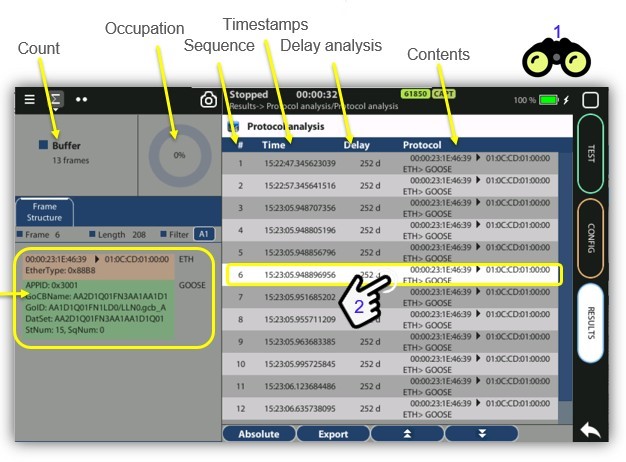Hands on GOOSE analyisis
Use xGenius and Zeus to analyaze GOOSE which is a IEC 61850 messaging system used by IEDs and mission critical applications to tell about substation events , such as commands, alarms, indications and measurements.
OKLAHOMA JUNE.06.22
The GOOSE protocol
GOOSE (Generic Object-Oriented Substation Events) is a protocol used in electrical substations and power systems defined by the International Electrotechnical Commission (IEC) standard IEC 61850 for the design and operation of automation systems. GOOSE focuses on the communication between Intelligent Electronic Devices (IEDs) in substations that include protection relays, bay controllers, and other devices to monitor and control the equipment in substations. Some of yhjr features are:
- Publish-Subscribe Model: as it follows a publish-subscribe communication model. In this model, an IED that generates a significant event or change in status (such as a fault detection) “publishes” this information using a GOOSE message. Other IEDs that are interested in this information can “subscribe” to receive these messages.
- Fast and Reliable: messages are designed for low-latency, high-priority communication. This is crucial in power systems where rapid response to events, such as faults, is essential for maintaining the stability and reliability of the electrical grid.
- Object-Oriented Representation: The term “Object-Oriented” in GOOSE refers to the fact that the information sent in the messages is structured as objects with associated attributes. This allows for a flexible and extensible data representation.
- Ethernet Communication:GOOSE messages are typically transmitted over Ethernet networks. This is in line with the broader trend in substation automation toward using standard Ethernet-based communication for interoperability and ease of integration.
- Protection and Control: GOOSE messages are often used for protection and control applications in substations. For example, a protection relay detecting a fault may send a GOOSE message to trip a circuit breaker and isolate the faulty section of the power system.

Fig 1. GOOSE focuses on the communication between IEDs in substations.
GOOSE is an IEC 61850 messaging system used to communicate in an efficient and standardized way between IEDs in substations and mission critical applications to report events such as commands, alarms, indications and measurements. As GOOSE messages replace hardwired signals used for protection and control applications, IEC 61850 introduces mechanisms to ensure the delivery of the required information. Capturing GOOSE with Zeus is an extension of the multi-stream analysis performed by these devices: Captured frames are the result of matching incoming traffic with the Port A filter blocks.
Zeus and xGenius
Both provide deep insights to design, install, maintain, troubleshoot and engineer communications resources of Mobile Operators, Power Utilities, Finace, Labs and R+D centers . The unit is able to verify Ethernet/IP, SyncE, PTP, GbE, IRIG B, 1PPS, T1/E1, G703, Serial Datacom, C37.94, GOOSE, SV, MMS, Round trip & One way Delay tests at all interfaces. It also has a set of programmable filters to capture live data traffic at wire speed.
Zeus & xGenius enable Ethernet traffic capture at wirespeed by adding precise time stamps obtained from a time reference (GNSS, ToD, IRIG B) when available.
Protocol analysis
The protocol analyzer permits to find out the frame structure, content and the time sequences of the GOOSE traffic captured thanks to time stamped marks. The Event logger of the testers facilitates the access to Global counts, statistics and LEDs provide information about which events and how many of them have been registered but they do not say too much about how they are distributed in time. These information is supplied at the Event Logger a graphical representation tool that permits to trace the evolution of key parameters. Traceable Events are categorized in different classes. Moreover, each test port has its own traceable events. These events may be different for each test port.
You can display the trace of the evolution of the previously selected parameters:
- View and analyze the details of the histogram
- Set the scale at your preferred zoom level
- Selected the filter A1 to display a http://www.netime.com/more detailed diagram about the captures
- Click on the screen to know the exact value at one specific time

Fig 3. GOOSE screen



